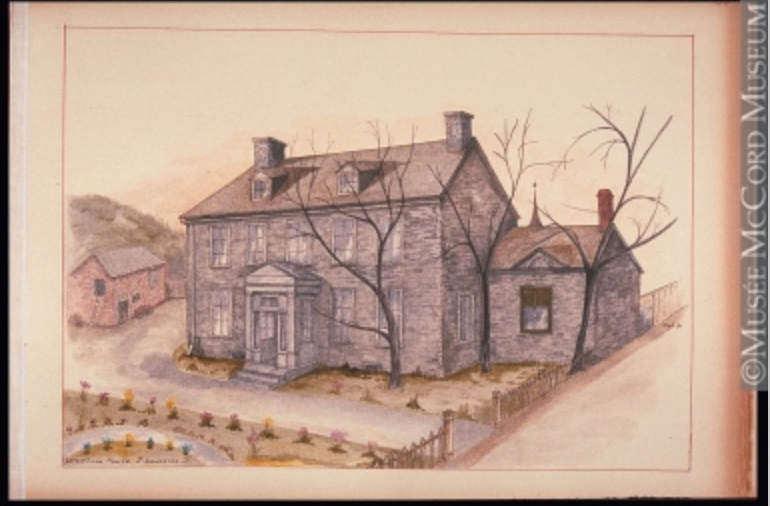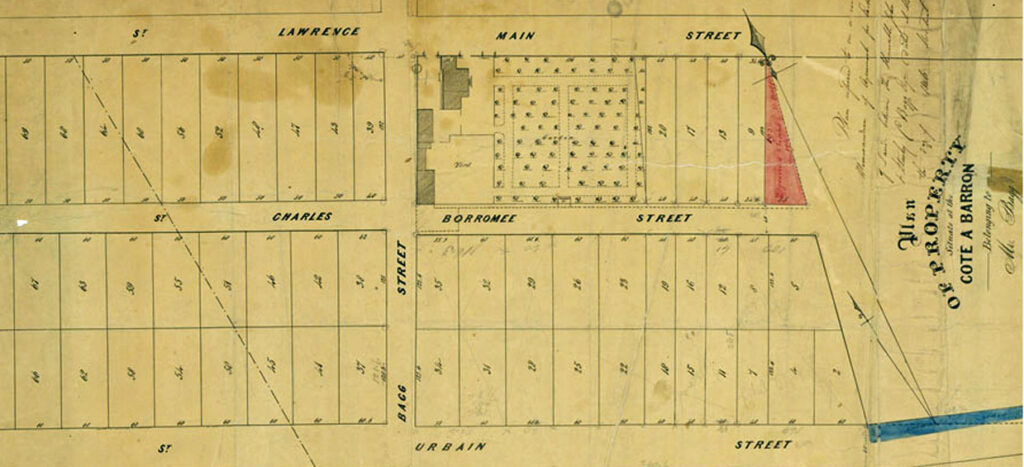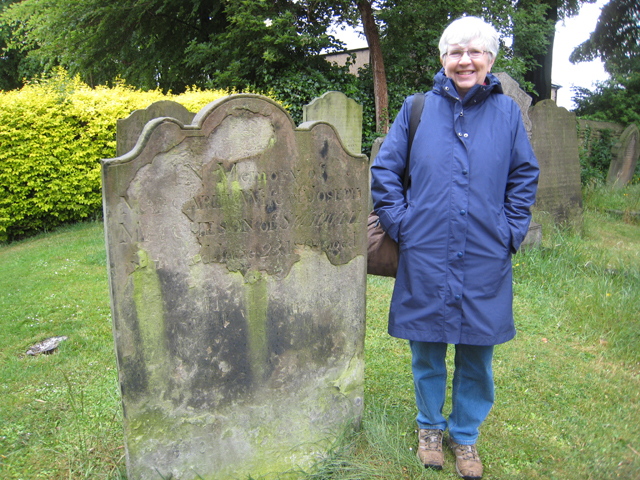
Like the expression “a life well lived,” Durham House was a home well lived in: people were born there, they married there, and they died there. But like many people, the house slowly declined as it neared 100 years of age. The home of Montreal merchant Stanley Bagg for most of his adult life, it was located on St. Lawrence Street (now St. Laurent Boulevard), just north of Sherbrooke Street. When it was built 200 years ago, the surrounding area was entirely farmland.
Butcher John Clark, who probably built the house around 1818, named it after his native city, Durham, England. When his daughter, Mary Ann, married Stanley Bagg a year later, Clark gave her the house as a wedding present. Stanley and Mary Ann’s only child, Stanley Clark Bagg, was born there. After Mary Ann died in 1835, Stanley and his son continued to live there.
For a brief time in 1837, the house played a military role. Stanley, a Major in the 1stBatallion of the Montreal militia, used it as a headquarters for the men under his command in 1837, when an armed insurrection broke out after the British governor and his unelected advisors rejected demands for responsible government.
A few years later, Stanley found himself in debt, so he gave the house to his son and sold him the furnishings. Stanley paid the servants’ badly overdue wages with the proceeds. An inventory of the contents showed that the drawing room had a sofa, a dozen mahogany chairs, an equestrian statue of Napoleon and three framed portraits (probably Stanley, his wife, Mary Ann, and his father, Phineas.) The dining room walls featured a framed portrait of George Washington and a view of Scottish mountains. There were four bedrooms and a sitting room. In addition to the kitchen, there was a dairy room, a pantry, and a laundry room. Farm and garden tools, three carpet bags and some stove pipes were found in the store room. There was a coach house, a bee house, a dovecot, a root house and a barn. The animals included four horses, five cows, two calves and a dozen pigs. In 1845, Stanley Clark Bagg’s wife, Catherine Mitcheson Bagg, gave birth to Stanley’s first grandchild, Mary Frances, at Durham House. Soon the young family’s new home, Fairmount Villa, was completed nearby, and Stanley was on his own.
Stanley does not seem to have been a man who was easily impressed, so when he mentioned a few events in his notebook (which was otherwise full of numbers and calculations), they must have been pretty exciting. On June 14, 1848 he wrote, “the house burnt,” although he did not say what caused the fire or how much damage occurred. And on June 8, 1850 he noted, “Mrs. Mitcheson came.” He was most likely referring to Catherine Mitcheson Bagg’s mother from Philadelphia.
After Stanley’s death in 1853, Durham House went through many changes. At first it was rented. In the mid-1860s, it was the home of the Proprietary College, run by Rev. Mr. Stone. In 1872, according to a newspaper report of a fire in the stable roof, Durham House was the residence of a Mr. Lesser. By this time, the neighbourhood was no longer rural, and tradesmen, including shoemakers, masons and carriage makers, had opened businesses across the street. Their shops occupied the main floors, while their families lived on the second.

In 1876, the piece of land on which Durham House was located had been subdivided, and Chalmers Presbyterian Church opened its doors next door. Lot 110, on which the house was located, was sold in 1889 to J.S. Vipond. Later, the property belonged to fruit seller Joseph Brown, although it is unclear whether Brown or Vipond, a coal and wood dealer, occupied the house.
St. Lawrence Street — or The Main, as it is often nicknamed – was always one of Montreal’s main arteries but, at the turn of the century, the city decided to make the former country road into an elegant boulevard. To make room for a wider street, many buildings along the west side were torn down. The front door of Durham House faced south and there was an extension on the east side of the building, probably a chapel. The extension was demolished, but the main building survived for the time being.
In 1908, The Montreal Gazette reported that the fruit seller’s estate had sold Durham House for $15,000. In February 1910, a newly constructed branch of the Dominion Bank opened for business on the corner. A 1915 map showed the house still standing right next to the bank, but there was junk stored in the former front yard. Durham House was probably demolished, unnoticed, around 1928.
Today, a historic plaque on the bank at the busy corner of St. Laurent Boulevard and Prince Arthur Street reveals the history of the house that stood there for so long.
Notes and Sources:
The source of the painting is: http://www.mccord-museum.qc.ca/en/collection/artifacts/M980.184.1.34
The source of the map is: http://images.banq.qc.ca/images1518/06M/CA601/S53/SS1/P2000/06M_CA601S53SS1P2041.jpg
Research Remarks: Les Amis de Boulevard Saint-Laurent (http://amisboulevardstlaurent.com/) organizes walking tours of St. Laurent Boulevard every summer. This community group has also erected a series of bilingual panels that recount the area’s history at various spots along the street. You can see the texts and illustrations from the panels online at http://amisboulevardstlaurent.com/panels/sherbrooke-mont-royal/?lang=en. Click on the information for 3590 Blvd Saint-Laurent to read about Durham House. There is an error here, however: it says Stanley Bagg was from Durham, England. In fact, his wife’s family was from Durham; he was born in the United States.
Justin Bur, president of Les Amis de Boulevard Saint-Laurent and a key member of the local history group Mile End Memories (http://mile-end.qc.ca/), was helpful and generous, as always. A Montreal Herald newspaper article dated June 4, 1904 provided key information. Stanley’s personal notebook is part of the Stanley and Abner Bagg collection at the McCord Museum in Montreal.
The microfilmed document that includes an inventory of the contents of the house is Act No. 3556, dated 2 Nov, 1842, of notary Joseph-Hilarion Jobin, accessed at the Bibliothèque et Archives nationales du Québec (BAnQ) in Montreal.
I did additional research in the Lovells street directory of Montreal, which you can browse online at www.banq.qc.ca, specifically http://bibnum2.banq.qc.ca/bna/lovell/. I also searched the archives’ extensive online map collection, http://services.banq.qc.ca/sdx/cep/accueil.xsp. The map site is in French only, but is easy to navigate. You can search by place (lieu), author (auteur), subject (sujet) and date.

